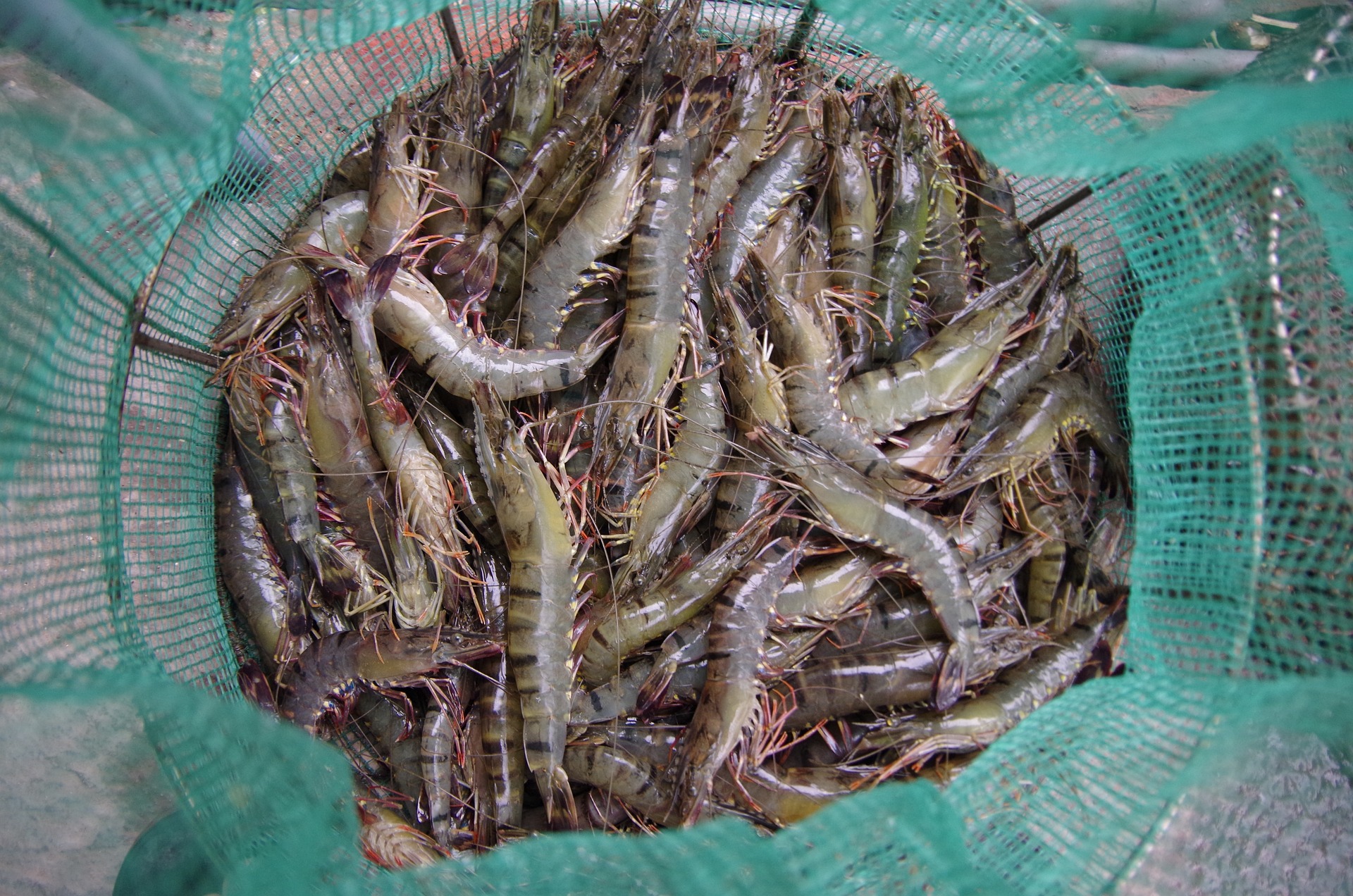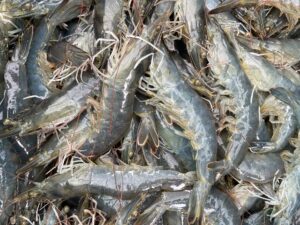Distress sales rise as the shrimping season draws to a close because exports dipped due to weak demand from traditional international buyers.

A host of factors — some external and some internal — have come into play to force Andhra Pradesh shrimp farmers into opting for distress sales or destroying their produce. (Creative Commons)
The shrimp business is in troubled waters in Andhra Pradesh. And it is the farmer — at the bottom of the supply chain — who is struggling to stay afloat.
So much so, that they told South First, they are being forced into distress sales even before the winter season for shrimp farming draws to an end towards the close of next month.
A host of factors have come into play to reduce them to this state, some external, and some internal: Dampened world demand, rising competition abroad, a traders’ cartel at home, and a power tariff chart that has not quite benefited them
“We are quite unable to decide what to do. Some of the big farmers had shifted to other fish cultivation. Small and marginal farmers faced the brunt most,” Mudunuri Venkata Bangaru Raju, a shrimp farmer from Bhimavaram, told South First.

Fleet-footed competitors — from Ecuador and Vietnam — have eaten away at India’s traditional markets in the US, Europe, and China. (Creative Commons)
The fallout of the pandemic has been immense; it has led to cost-cutting across economies as nations struggle to rein in inflationary trends. One of the many measures to have been taken is the reduced imports.
Of those who have been hit as a result are India’s shrimp/prawn exporters.
Complicating matters for them have been fleet-footed competitors — from Ecuador and Vietnam; they have eaten away at India’s traditional markets in the US, Europe, and China.
“Ecuador has emerged as a fierce competitor to India,” said Gunturu Pawan Kumar, general secretary of the Andhra chapter of the Seafood Exporters Association of India (SEAI).
“Their exporters can offer competitive rates because of their proximity to the US and a few European countries,” Kumar told South First.
It was due to the same reason that the Indians lost their other big market — China — to Vietnam. In fact, Kumar said, Vietnam has of late emerged as “an aqua hub exporting to China”.
This apart, Covid-19 had a direct role to play in India losing the Chinese shrimp market. Last year, export permits for Indian exporters were suspended after traces of the virus were detected on the packaging containing shrimp consignments to China.
Half of these exporters were from Andhra Pradesh. “China has not resumed imports since then,” said Kumar.

Local traders influencing the domestic market form cartels, which help them drive down procurement prices. (Creative Commons)
The next big factor that has hit shrimp farmers is the hold that the local traders have on the domestic market; they form cartels, which help them drive down procurement prices.
This was most blatantly over the past few months as traders made a mockery of the minimum support prices (MSPs) that the state government set to protect the interest of small shrimp farmers; they simply refused to pick up stocks.
The MSP slabs announced last month work on the “count” formula — ie, the number of pieces per kilogram.
Shrimps are graded according to their count per weight. In shrimp, trade weight doesn’t matter but size matters. Less count per a kilo means bigger size that commands a higher price in the market. It is believed that bigger size shrimp tastes better than smaller one.
As per this formula, the MSP is ₹240 for 100 counts of prawn, ₹250 per 90 counts, ₹275 for 80 counts, ₹295 for 70 counts, ₹395 for 40 counts and ₹435 for 30 counts.
However, there are not many takers for the produce at these prices. A prawn farmer told South First they suspected “syndicating”, using the local terms for cartels.
“The government has fixed the MSP rates. But traders are not coming forward to buy at these prices,” Bangaru Raju said.
“Either they are offering a very low price or not at all lifting. We suspect they are resorting to syndicating and not buying from us,” said another farmer.
According to media reports quoting the state’s aqua farmers, processing units and exporters are offering rates that are anything between ₹35-₹55 below the fixed price.
Chief Minister YS Jagan Mohan Reddy has now constituted a high-level committee with ministers and senior officers to look into the issue.
The power tariff revision has compounded the woes of the shrimp farmers in Andhra Pradesh.
The government announced a subsidised electricity rate of ₹1.50 per unit for aquaculture three years ago. However, it has revised the tariffs for the sector.
The revised power tariff had been effective since May. However, its effect on the shrimp industry has only become evident with the start of the winter season.
Under the revised tariff structure, the old rate of ₹1.50 per unit has been limited to shrimp farms and fisheries below five acres in size, while bigger tanks will be charged ₹3.85 per unit.
But the catch is that almost all fish and shrimp farmers in the state prefer farms larger than five acres, as smaller ones have proved unviable for them.
This apart, a sizeable number of these farms are located are in non-aqua zones, which effectively means a higher levy for them.
Shrimp culture is power-intensive, as the ponds for it need aerators to add air to the water so as to maintain a steady oxygen supply for the shrimps. A one-acre pond needs nearly 10 hp — about 7,700 units — of power supply a month.
This means a farmer will have to shell out at least ₹26,000 per month on account of electricity if he is paying ₹3.50 per unit.
Weak demand from traditional international buyers as well as a lukewarm domestic response of late means shrimp farmers of Andhra Pradesh, already nursing the wounds caused by the pandemic, have either been forced into distress sales, or into destroying their produce, in the last two months.
This is because while the state’s cold storage infrastructure is almost nil, local market linkages are also weak. As a result, prawn farmers said, the winter crop has been a near washout.
Winter crop refers to shrimps farmed from July-August to November-December, while the summer crop is between March-April and June-July.
A lion’s share of India’s overall shrimp exports is accounted for by Andhra Pradesh. In 2021-22, it accounted for ₹27,476 crore, or 34.76 percent of India’s total shrimp export of ₹57,586 crore.
There is clearly a need to address the problems of Andhra’s shrimp farmers with some urgency.

Jul 26, 2024

Jul 26, 2024

Jul 26, 2024

Jul 25, 2024

Jul 24, 2024

Jul 24, 2024